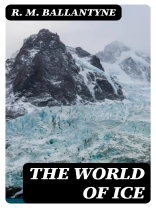In ‘The World of Ice, ‘ R. M. Ballantyne captivates readers with a thrilling narrative set against the stark landscapes of the Arctic. This adventure novel follows the escapades of a group of explorers who face the perils of ice and seafaring, reflecting the Victorian fascination with distant lands and the allure of the unknown. Ballantyne employs vivid descriptive language and an engaging, often episodic structure, immersing the reader in the harsh realities of polar expeditions while simultaneously conveying the romance of discovery. Through intricate detailing of the landscape and weather conditions, he situates his narrative within the broader context of 19th-century exploration literature, where man’s spirit is pitted against nature’s formidable forces. R. M. Ballantyne, a prolific Scottish author known for his adventure tales, drew inspiration from his own youthful experiences in the Canadian wilderness and his later interests in geology and the natural world. His earlier work as a fur trader provided him with firsthand encounters that would enrich his storytelling. This immersion in the rugged outdoors not only informed the authenticity of his narrative but also fueled his desire to instill a sense of respect for nature’s power among his readers. ‘The World of Ice’ is highly recommended for readers who revel in tales of adventure, exploration, and survival. It not only serves as a riveting account of human tenacity but also provides timeless reflections on the interplay between man and nature. Ballantyne’s masterful prose invites modern readers to embark on a journey that evokes the spirit of adventure in the face of insurmountable odds.
关于作者
R. M. Ballantyne (1825-1894) was a prolific Scottish author of juvenile fiction, well-embedded in the literary traditions of the Victorian era. Drawing from his own experiences, Ballantyne often incorporated his adventures at sea into his narratives, enriching them with authenticity and vivid imagery. A significant work in his oeuvre, ‘The World of Ice’ (1860), is a gripping tale that exemplifies his ability to blend educational content with entertainment—a hallmark of his literary style. Ballantyne’s influence extended to the realms of moral and Christian literature, where he emphasized virtues such as perseverance and integrity. His books captured the imaginations of young readers during the 19th century, and his pioneering efforts in the adventure genre set a template for generations of children’s literature to follow (Quayle, 2007). Ballantyne’s works proliferated during his lifetime, contributing over 100 titles to the literary canon. He is celebrated for his meticulous research, which imbued a sense of realism into his stories and provided his audience with accurate portrayals of various occupations and locales. Ballantyne’s enduring legacy is reflected in the continued availability and study of his compositions in the context of Victorian literature and the development of adventure narratives for young audiences (Watson, 1982).












